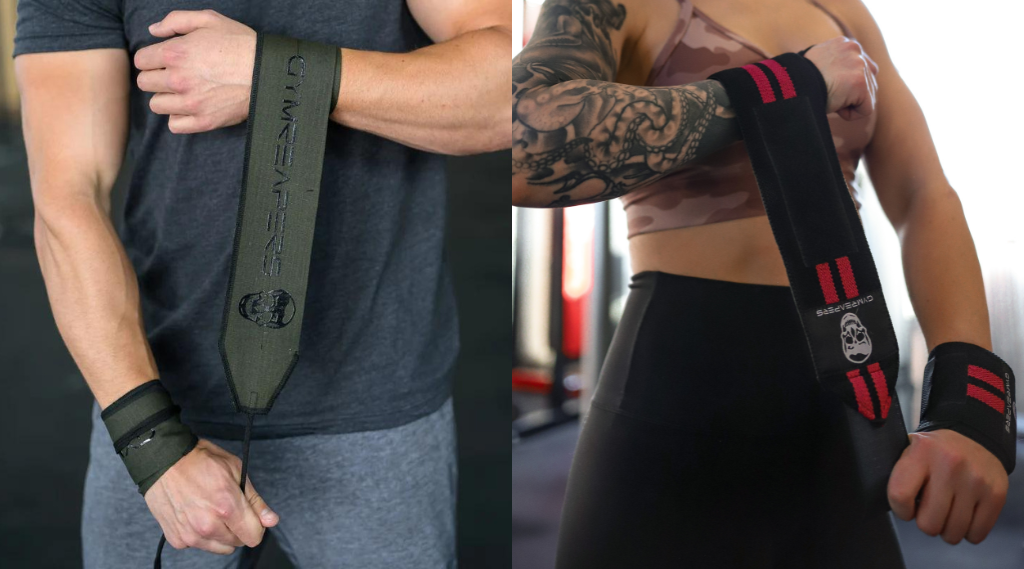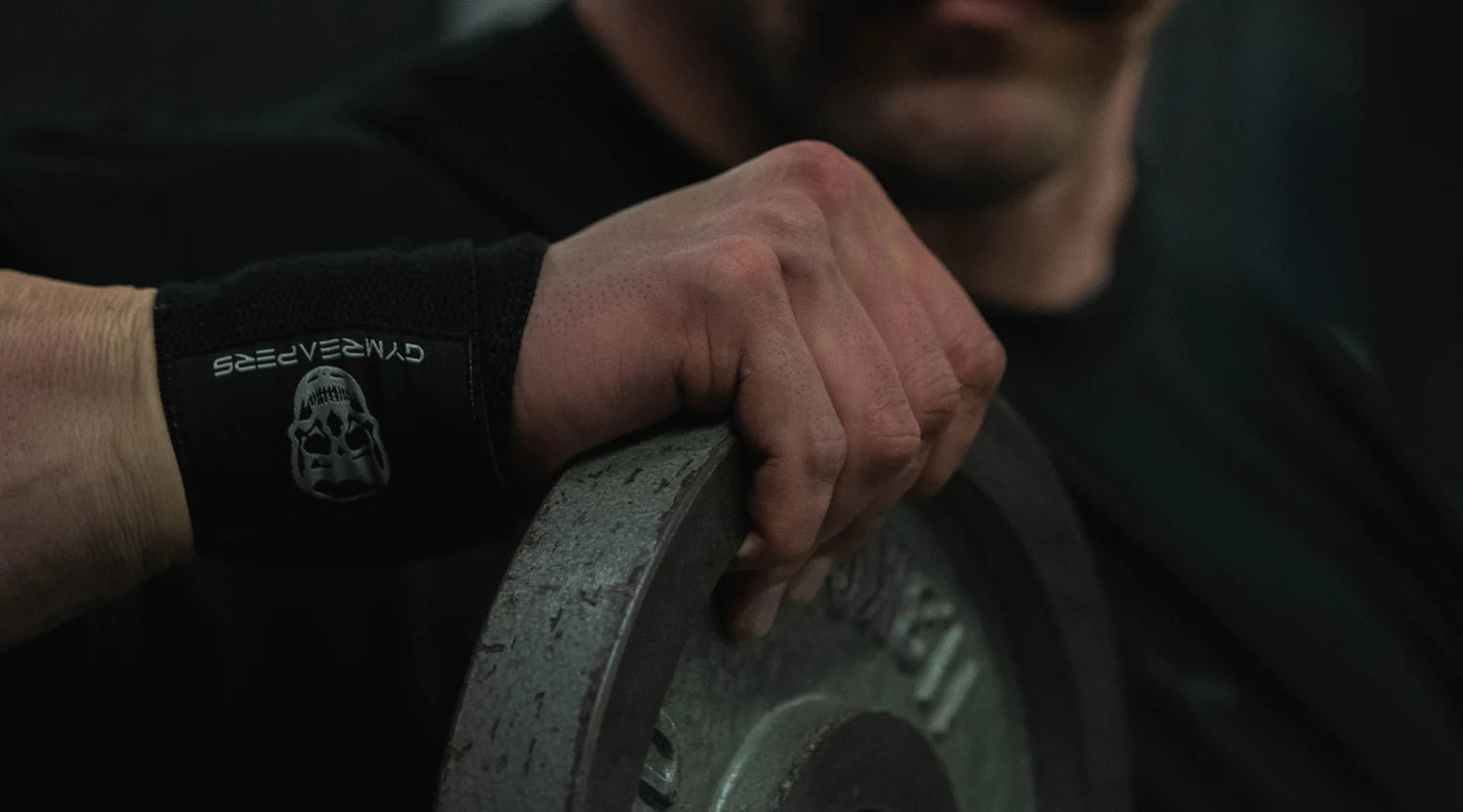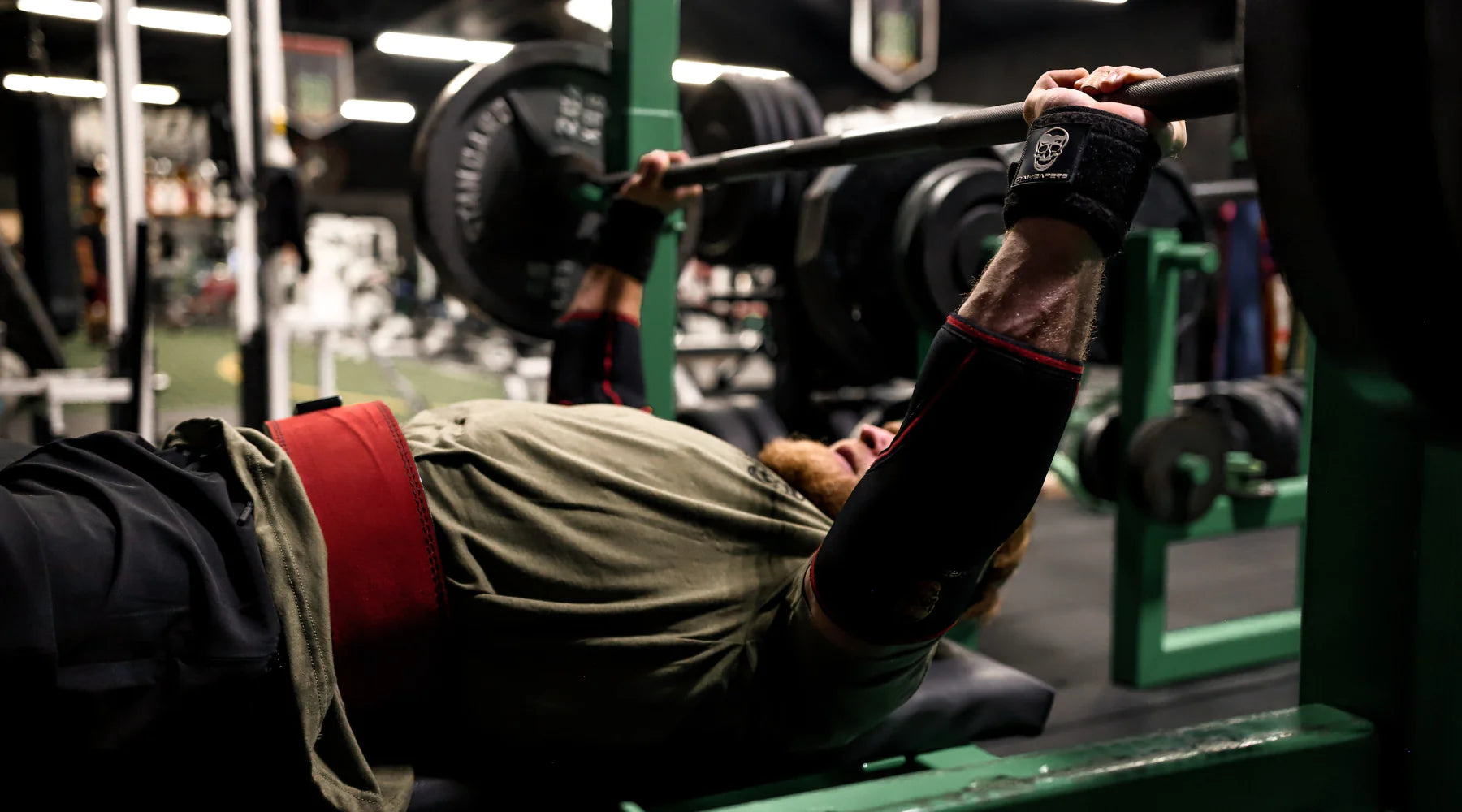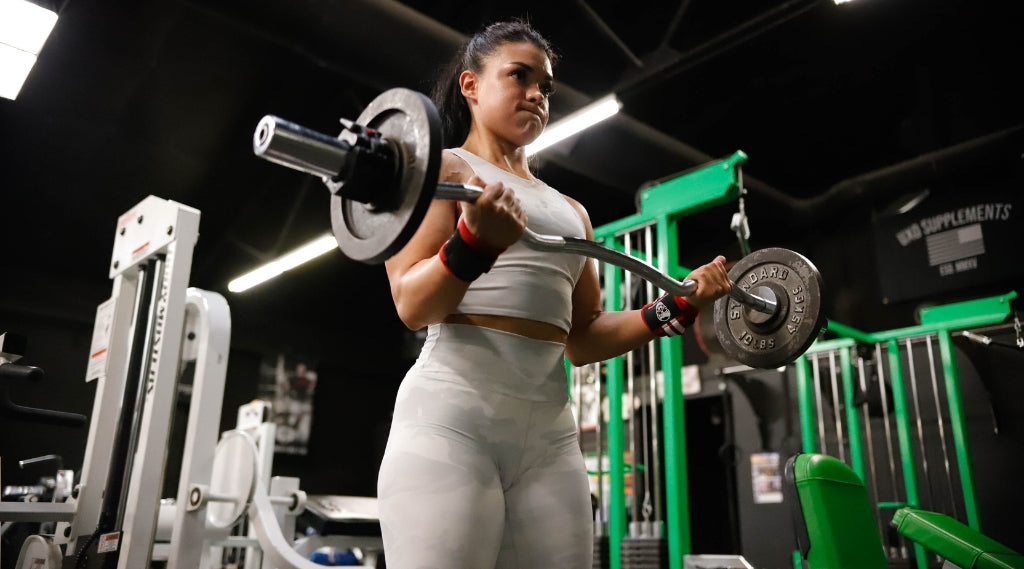As a personal trainer with over eight years of experience, I’ve received one common question from clients: "Can I wear wrist wraps while lifting to reduce joint pain and prevent injuries?”
Here’s my quick answer:
Wrist wraps can be beneficial for joint health because they provide stability through compression, allowing you to keep your wrist straight while lifting. As a result, your wrists are less likely to be in a compromised position that causes joint stress and puts you at risk of chronic aches and injuries.
But while wrist wraps promote stability and safety, you must know when to use them and when to address the underlying issue to avoid a potential injury.
Key Takeaways
- Wrist wraps are primarily beneficial for pain related to pressing movements. However, they might not be helpful for other wrist issues, such as ulnar wrist pain.
- When used correctly, wraps immobilize the wrists, which could promote elbow health by reducing the eccentric loading on the forearm flexor muscles.
- If you’re interested in wearing wrist wraps to reduce pain while lifting, you must understand when it might be good to wear them, when not to, and what type to purchase (stiff or flexible).
Do Wrist Wraps Help With Pain Prevention While Lifting?

Wraps can help prevent pain associated with wrist bending (extension) during heavy pressing. When used correctly, a good pair of wraps will immobilize your wrists, making it nearly impossible for them to bend, even when pressing 80+ percent of your 1RM.
A straight wrist means less stress and greater joint comfort, leading to more productive training and a greater potential to create the necessary overload.
With that said, wraps primarily help prevent wrist pain associated with traditional pressing exercises: bench press, overhead press, etc. They might be unable to prevent other types of pain, such as ulnar wrist pain that occurs in the outer portion of the wrist (opposite to the thumb).
That type of pain generally results from using a straight bar during curls and often goes away when lifters switch to dumbbells or an EZ curl bar. Doing so puts the wrists in a more comfortable position.
Do Wrist Wraps Help Manage Pain While Lifting?
Wrist wraps can help manage pain while lifting but only in certain situations. Most notably, wraps can reduce pain from excessive wrist extension by keeping the joint straight during training.
For example, if you’re preparing for a powerlifting competition and experience wrist pain during or after pressing exercises, using wraps can contain the issue and allow you to continue your planned training.
However, it’s worth noting that wrist wraps cannot cure an existing injury and do not address the underlying reason for your pain. Their job in such a scenario is merely to mask the issue and keep it from worsening.
If the pain persists or increases even with wrist wraps, it might be best to take some time off heavy training to address the issue.
Wrist Wraps For Wrist Pain: How They Help

Wraps are long pieces of fabric material you wrap around your wrists several times and secure in position with Velcro.
The way wrist wraps work is relatively straightforward. Looping a wrap around your wrist several times and tightening it in position immobilizes the joint to the point where you can barely bend it half an inch in either direction.
When used correctly, wraps should feel uncomfortable because of the snug fit––to the point where blood flow to your hands decreases slightly.
The advantage is that your wrists cannot bend when you’re pressing heavy weights, and the strain is much less significant. As a result, you’re less likely to experience wrist pain during or after your training.
With that said, wrist wraps and other accessories can become a crutch when overused, so be careful not to become overly reliant.
“You don’t need wrist support until a large load is coming through the joint. Some coaches would even say you don’t need them until you are at a max lift. If you have an injury or the weight is heavy, by all means, use the support. But, in general, wait until the load is getting heavy to use them so that you do not become reliant on the support.”
-Carli Kavanagh, PT, DPT
Wrist Wraps For Elbow Pain: How They Help

Nothing in the body works in isolation––everything is connected. What happens to one portion of the body will inevitably impact the surrounding areas (muscles, connective tissues, bones, joints, etc.).
For example, having flat feet often leads to knee valgus (knees collapsing inward), which, in turn, can cause excessive hip stress and pain. As you can see, a seemingly minor thing most people don’t even detect can lead to a chain reaction of unfavorable outcomes.
The same applies to your wrists and elbows. While seemingly separate, the two joints affect one another more than most people imagine.
In the case of pressing exercises, the wrists often bend under a heavy load, which places a significant amount of eccentric stress on the forearm flexors, especially at the attachment point––the medial epicondyle of the humerus.
Over time, tendon degeneration can result from repetitive forced wrist extension (such as when your wrists bend during heavy bench pressing), leading to recurring elbow issues.
As you’ve probably realized by now, wearing wrist wraps can reduce such risks. Wraps immobilize your wrists, making them less likely to bend. As a result, there is less eccentric loading on the forearm flexors and significantly less stress on the medial epicondyle.
- Related Article: Does a Lifting Belt Help Your Back? Yes, Here’s How
When To Use Wrist Wraps To Help With Pain
Like any other accessory, you should use wrist wraps only when you think it is necessary and avoid becoming too reliant on their assistance. Examine your wrist position on different exercises (and when using various loads) and keep track of pain––when it occurs, where you feel it most, and how intense it is.
Most trainees should perform their lighter sets without wrist wraps and attempt to keep their wrists straight. Position the barbell as low on your hand as possible (close to the wrist) with your thumb wrapped over it.
Pain will generally surface when you get closer to your 1RM and your wrists bend. Take note of when that happens, and proactively wrap your wrists in future workouts to prevent pain.
Regarding the movements you use wraps for, it’s generally best to limit them to pressing exercises: the bench and overhead press. You should be able to maintain straight wrists on most other activities––skullcrushers, cable tricep extensions, etc.
Related Article: Do Wrist Wraps Weaken Your Wrist & Forearm? A Coach Answers
When NOT To Use Wrist Wraps For Pain
As mentioned above, wrist wraps cannot cure injuries and don’t target the underlying cause of pain. Their primary job is to compress the wrist joint, which could prevent pain from surfacing during training.
Unfortunately, that doesn’t always work out well, and wraps might not help everyone in all situations.
If you feel that wrist wraps don’t provide stability or keep your wrists from bending, tighten them more, or don’t use them. Similarly, if wraps stabilize your wrists but the pain doesn’t go away or appears to get worse, take them off.
Sometimes, the only thing you can do is take some time off training to address problems. You might not want to hear it, but it is infinitely better to do a few weeks of light training than to spend several months away from working out due to a wrist injury.
Best Type Of Wrist Wraps To Help With Pain While Lifting

The two primary types of wrist wraps are stiff and flexible. Stiff wrist wraps, such as these by Gymreapers, consist of reinforced elastic material, which feels tough and doesn’t stretch much, even if you pull it hard.
In contrast, flexible wrist wraps, such as these ones by Gymreapers, consist of regular elastic material that stretches significantly more, even if you don’t pull that hard when looping them around your wrists.
Most people prefer flexible wrist wraps because they are easier to put on and provide the necessary wrist support. Stiff wraps are also a viable option because they immobilize the wrists.
The primary downside of stiff wrist wraps is that they take slightly more effort to loop around the wrists. Also, since they are somewhat thicker than regular wraps, the fabric stands up more, and tiny gaps might develop between the layers.
If possible, try both types of wrist wraps and see which feels more supportive and comfortable before purchasing. Alternatively, pull the trigger on a pair of flexible wrist wraps. These will provide the associated benefits for most people and support your wrists when pressing well into the 300 or 400+ pound range.













Leave a comment
All comments are moderated before being published.
This site is protected by hCaptcha and the hCaptcha Privacy Policy and Terms of Service apply.